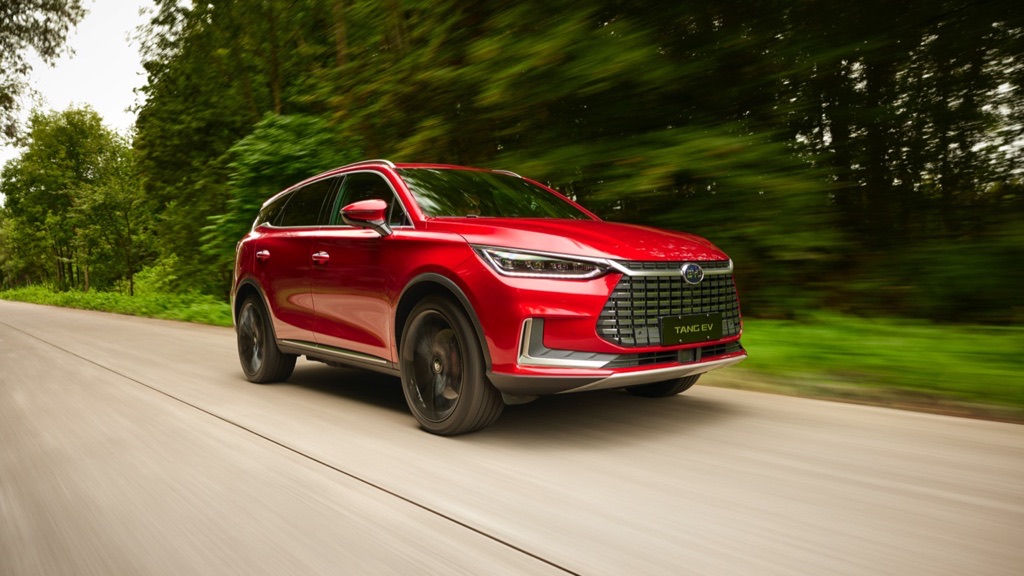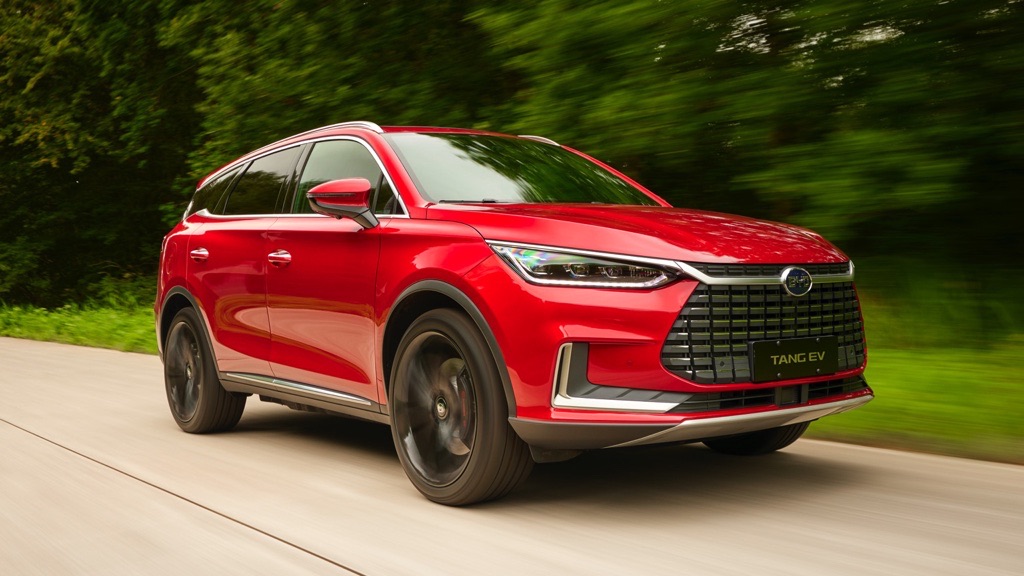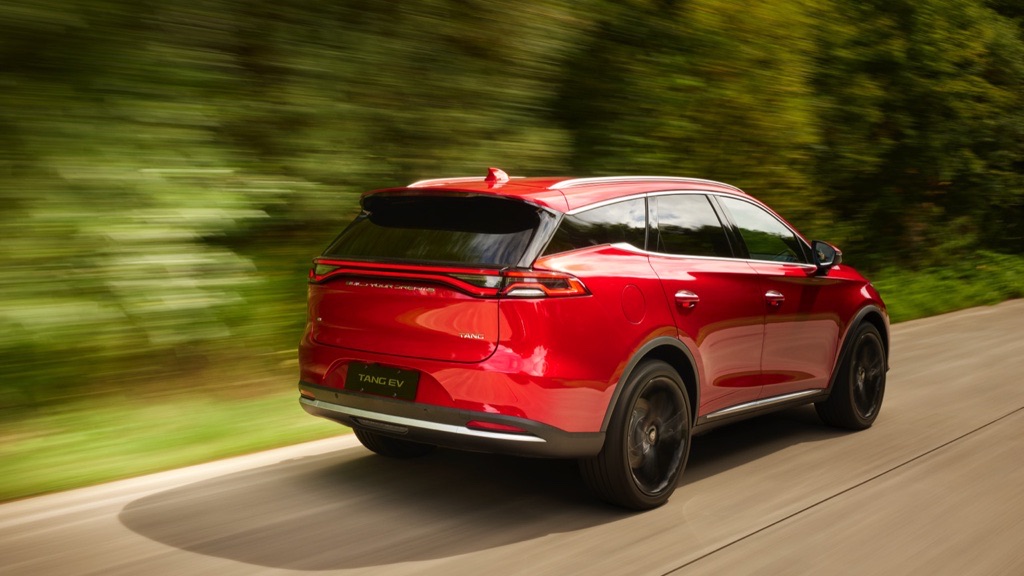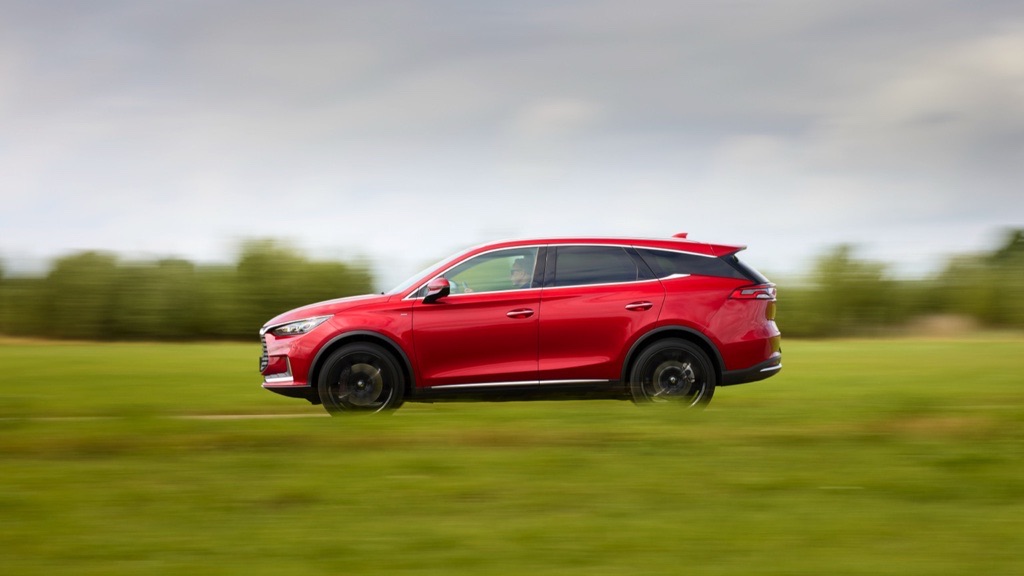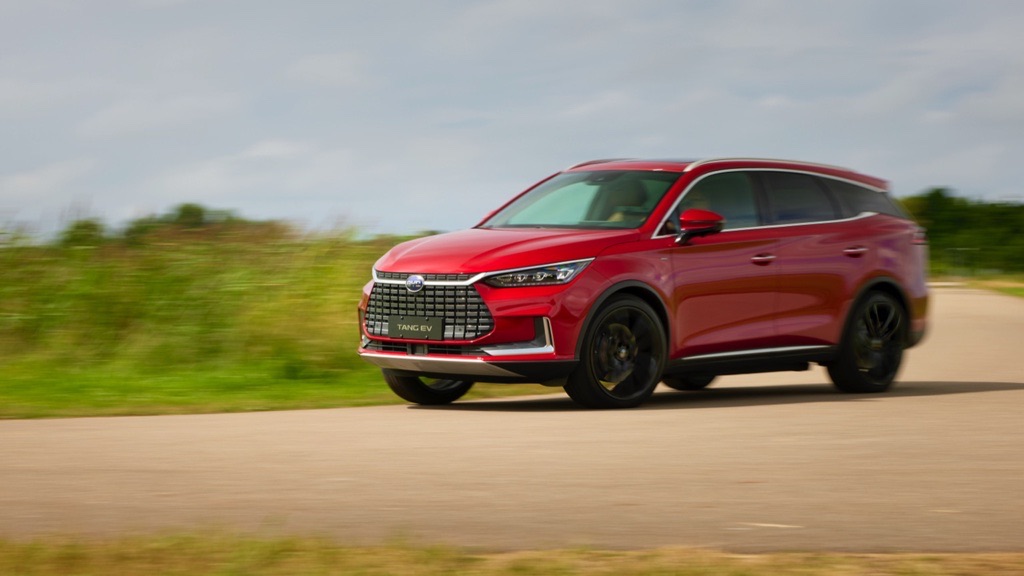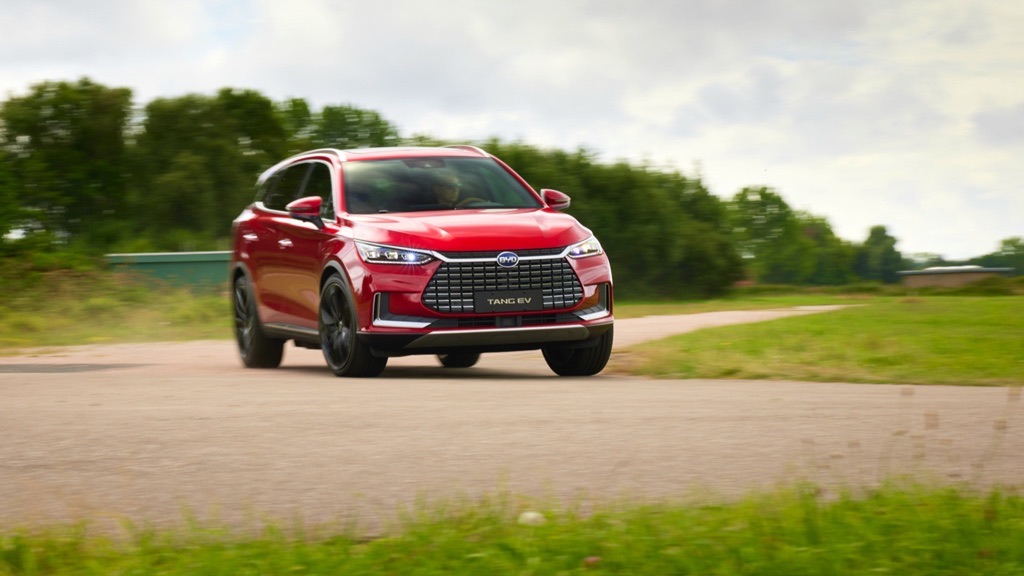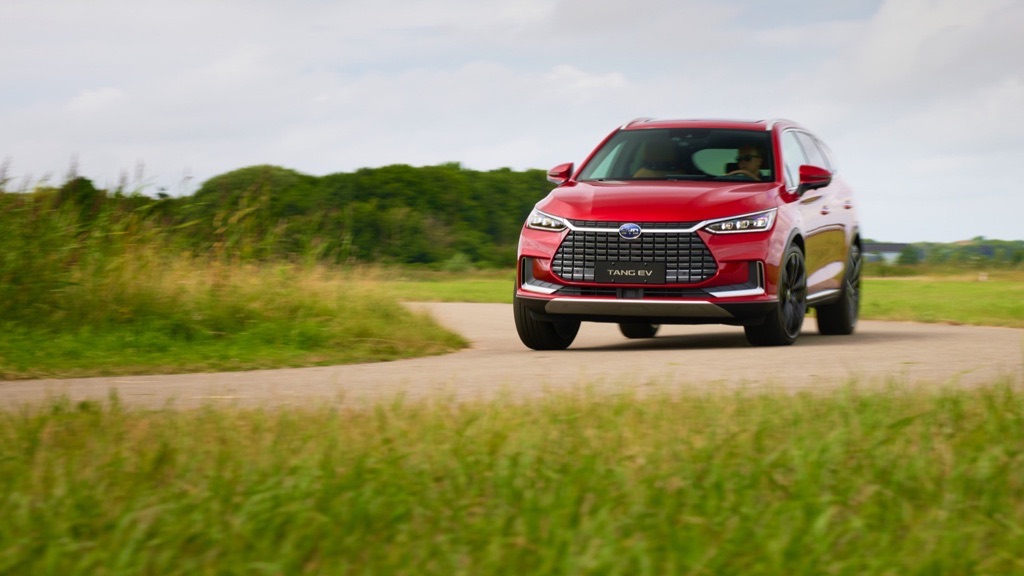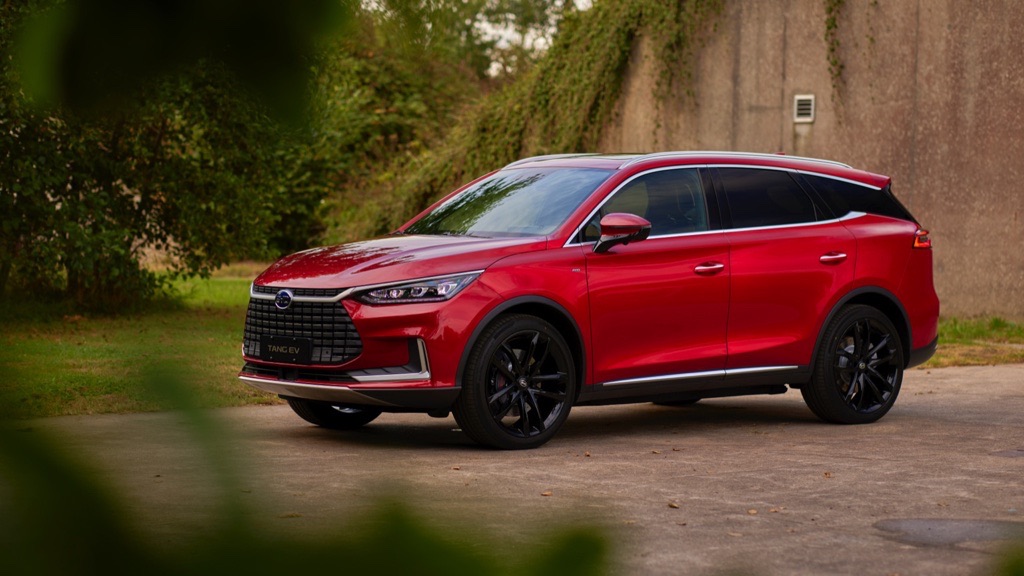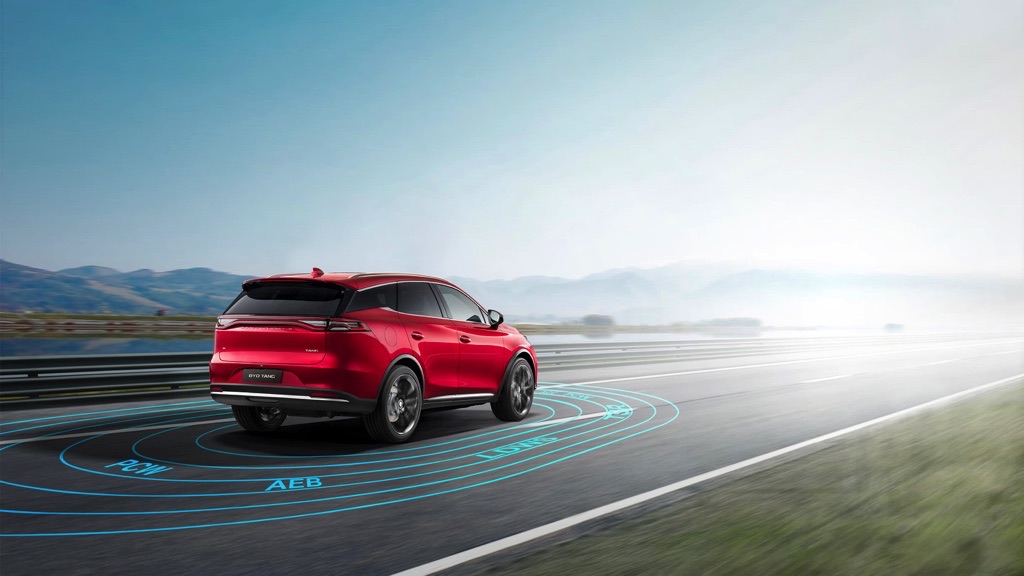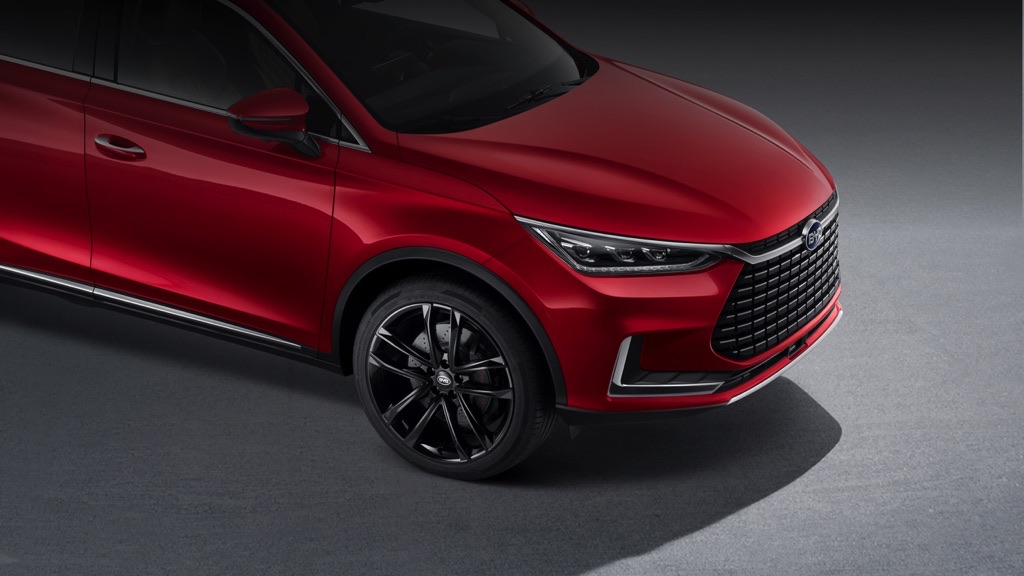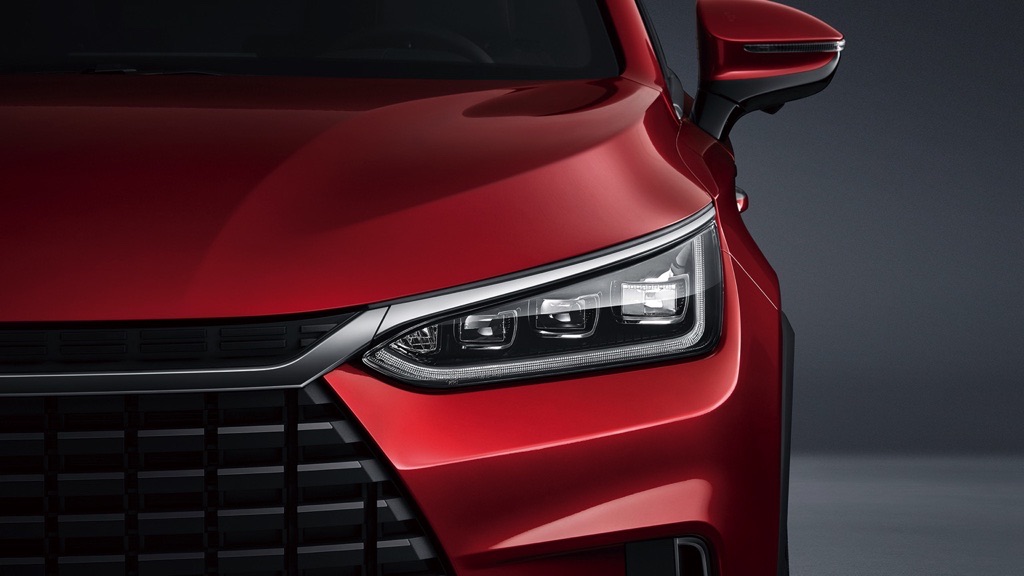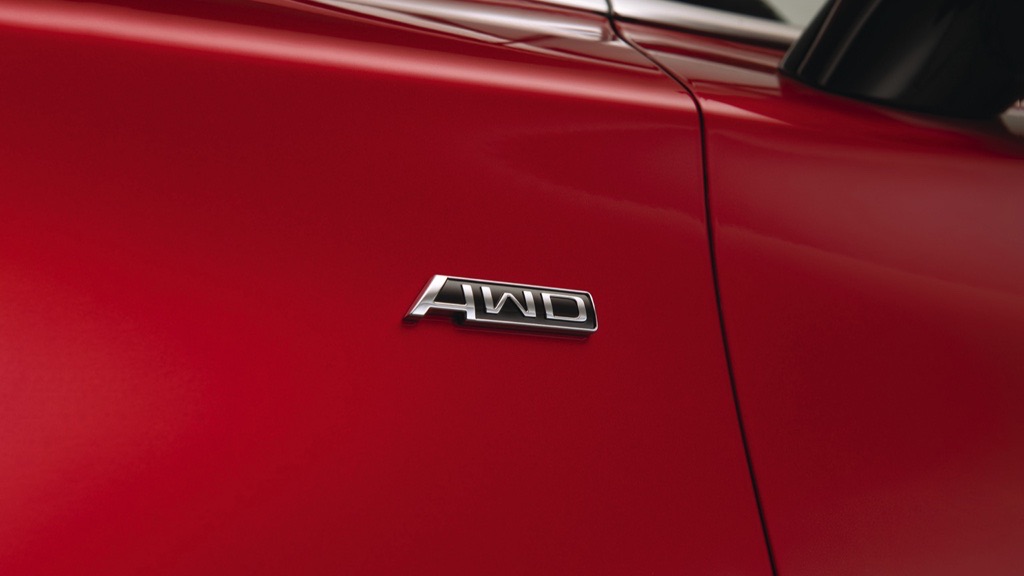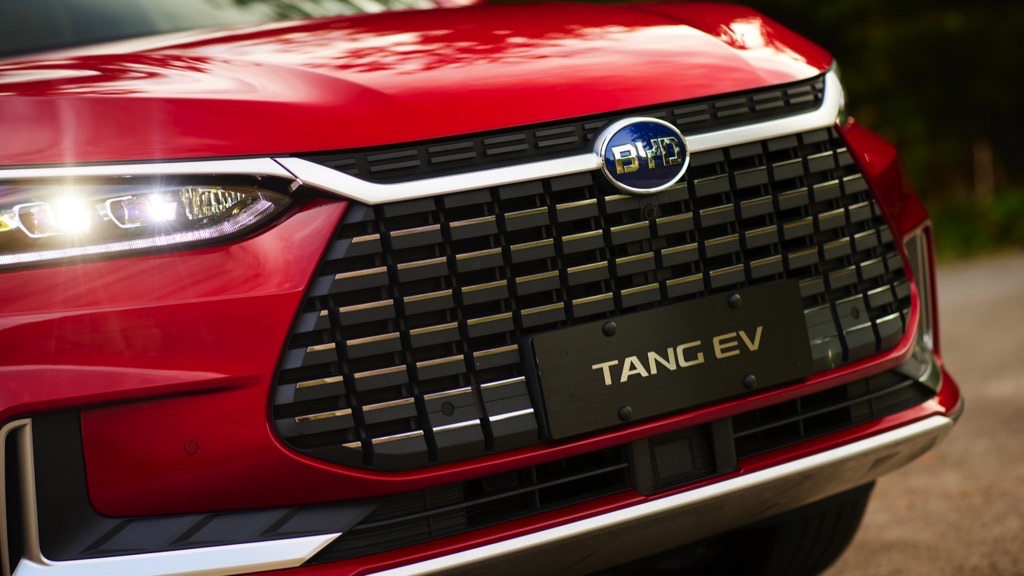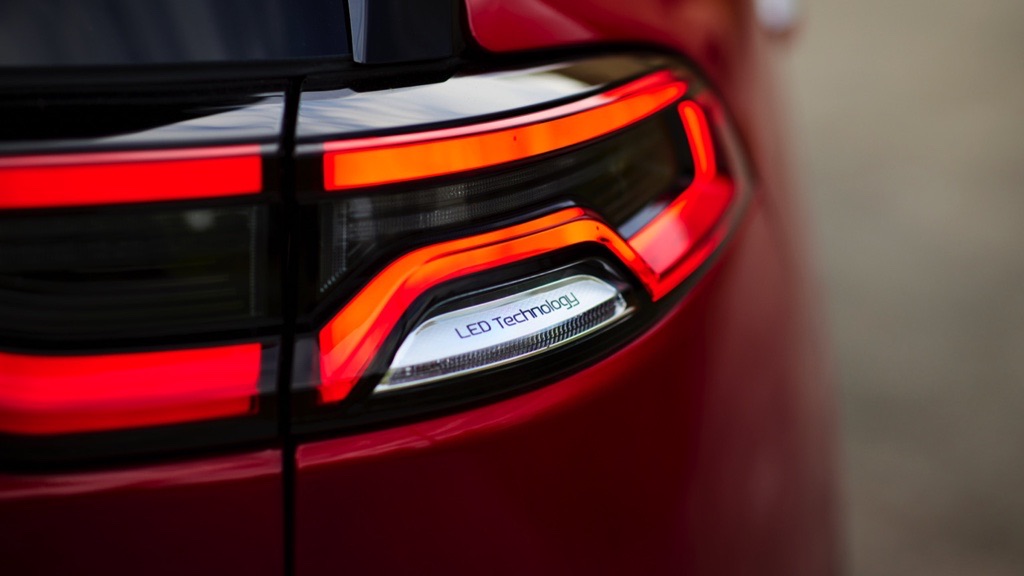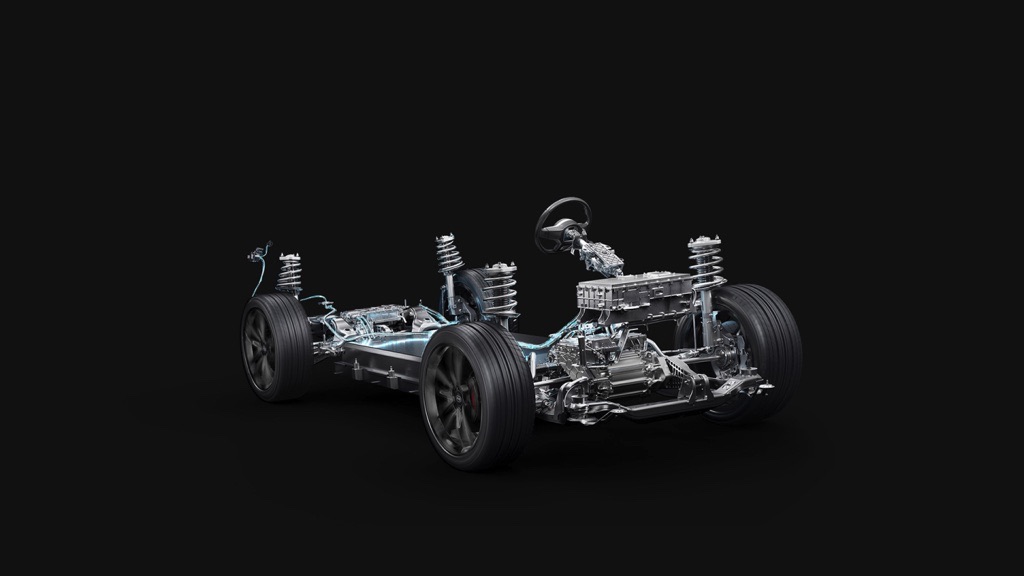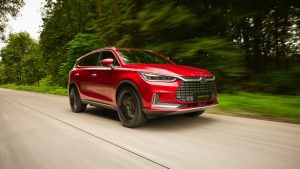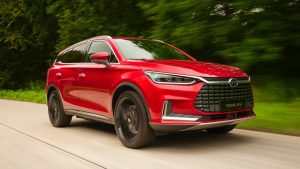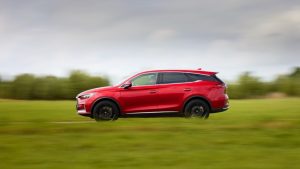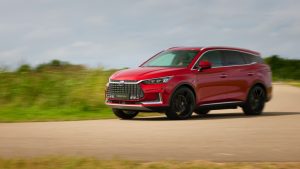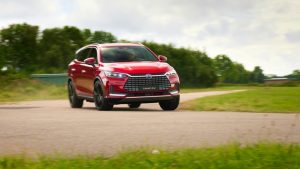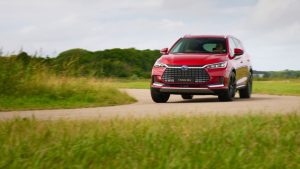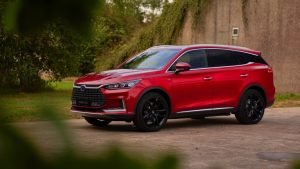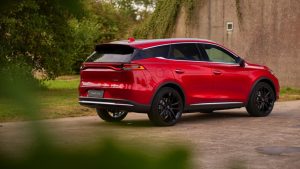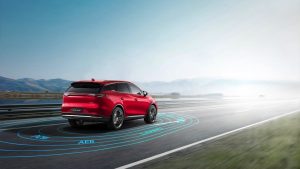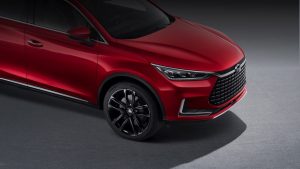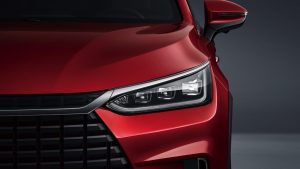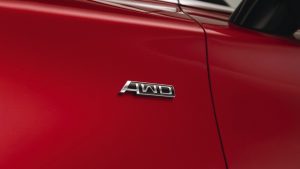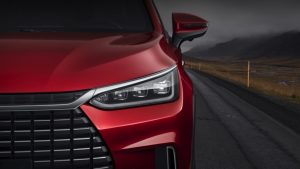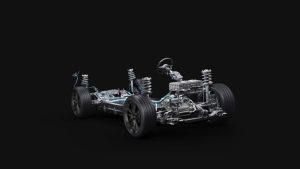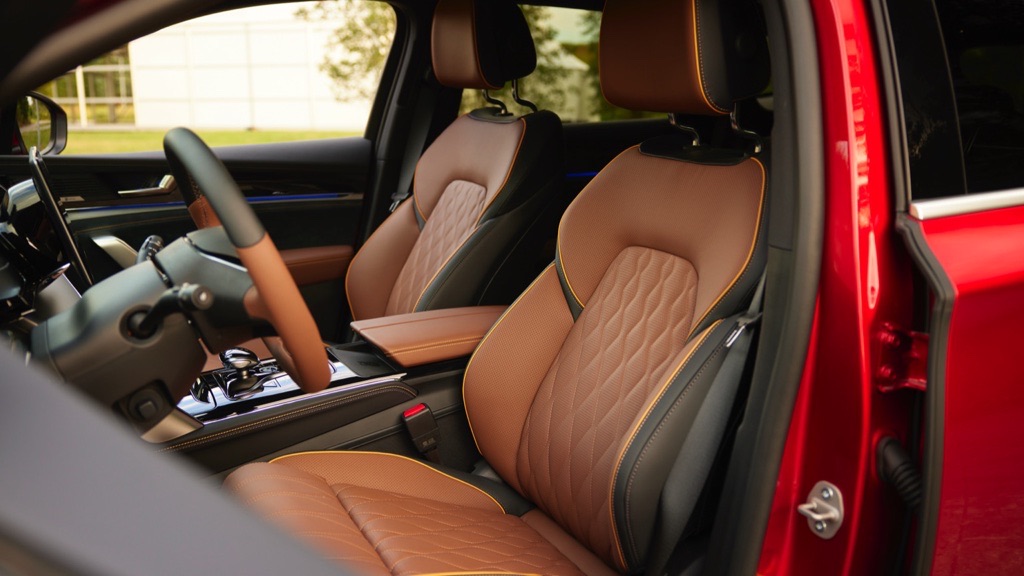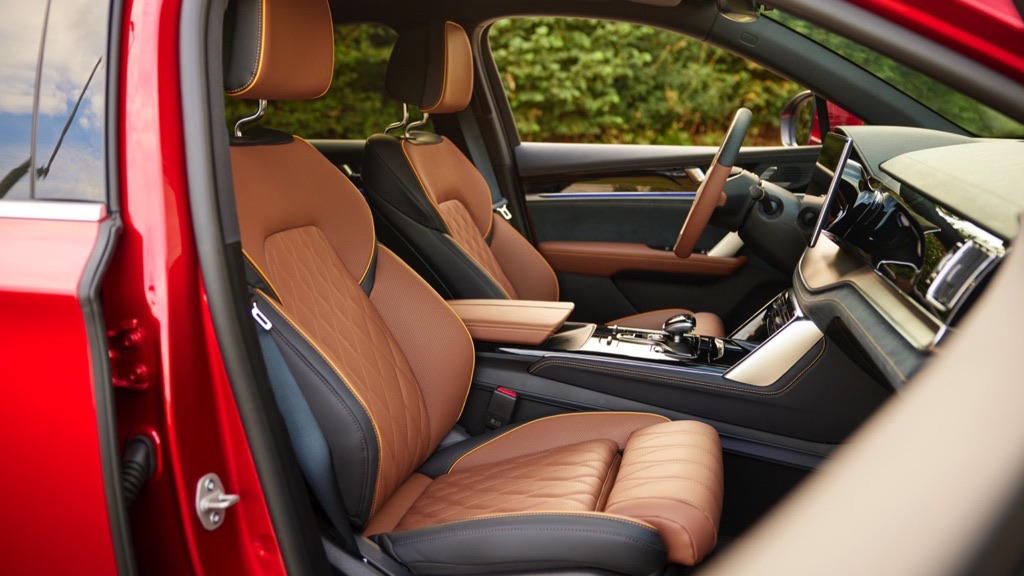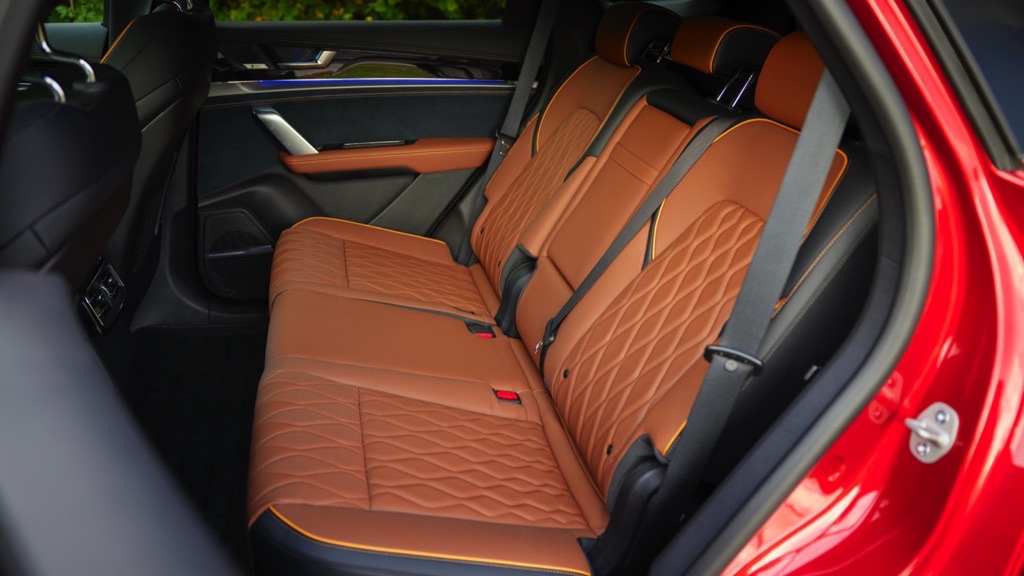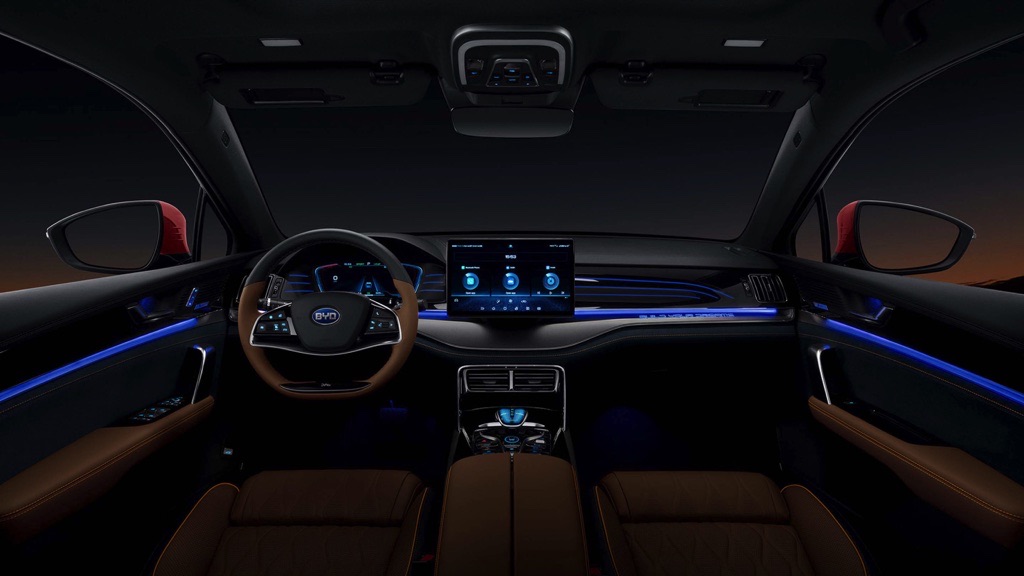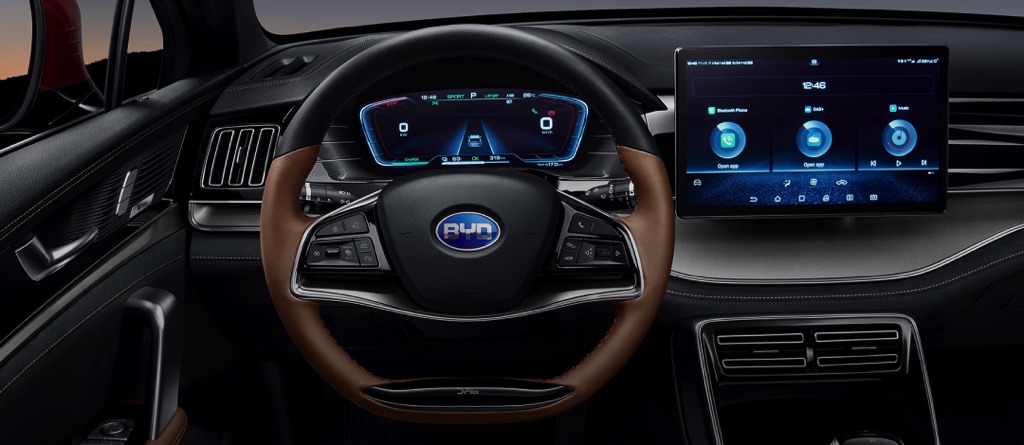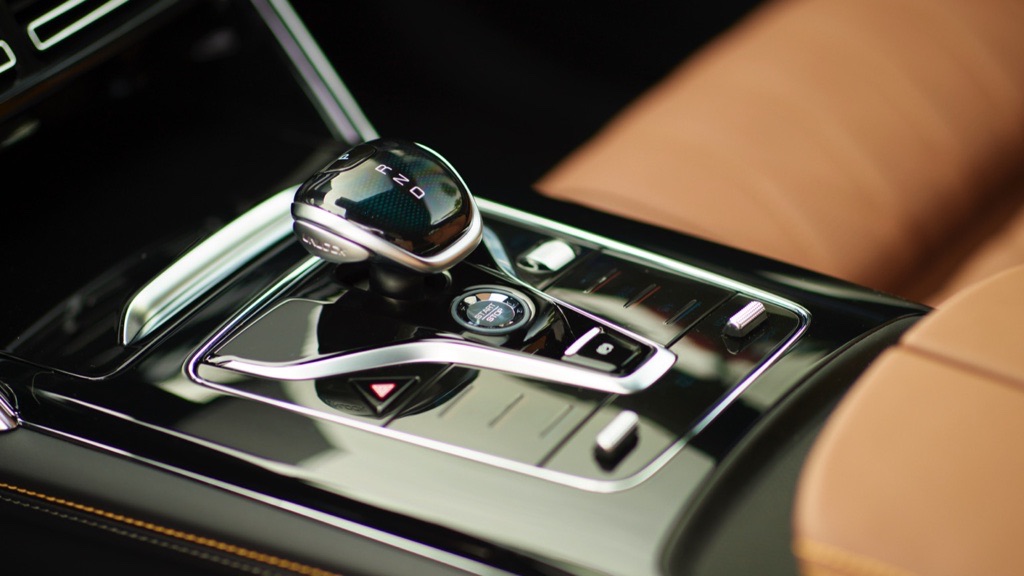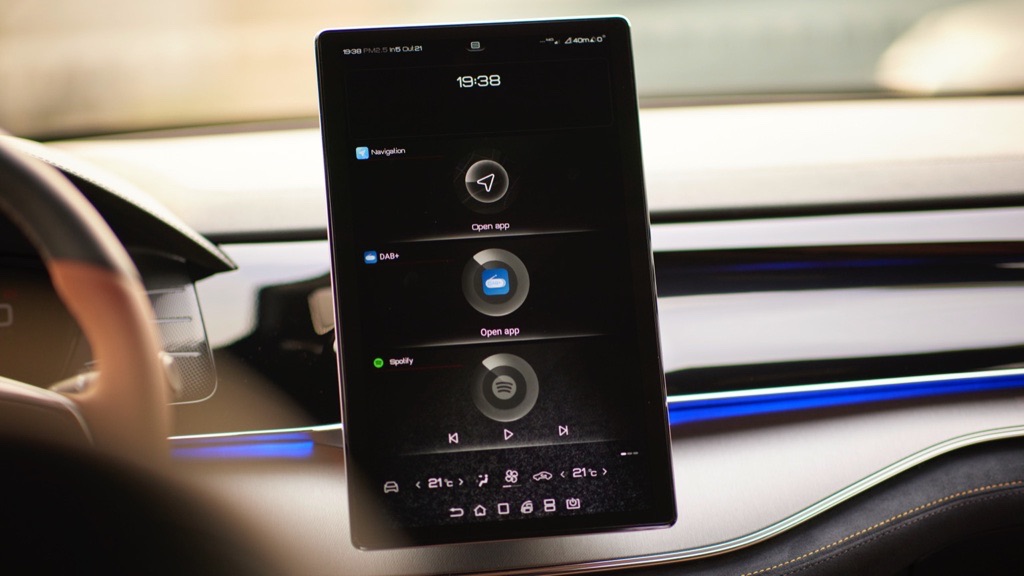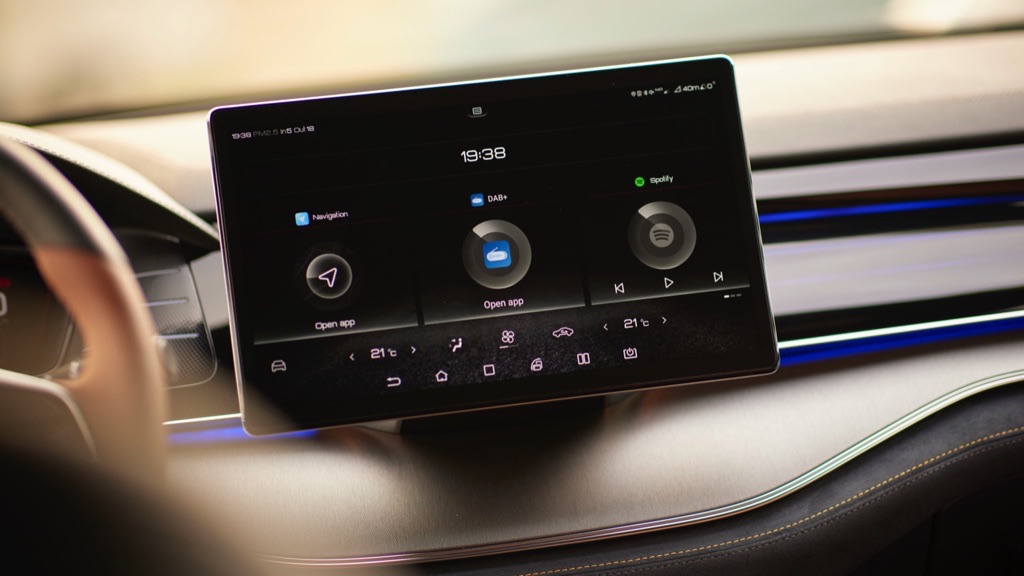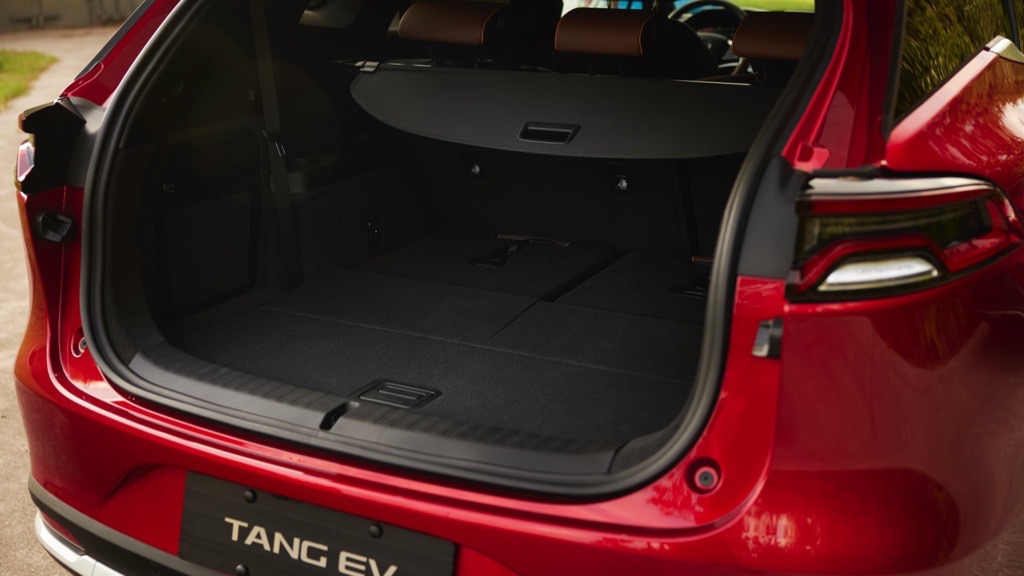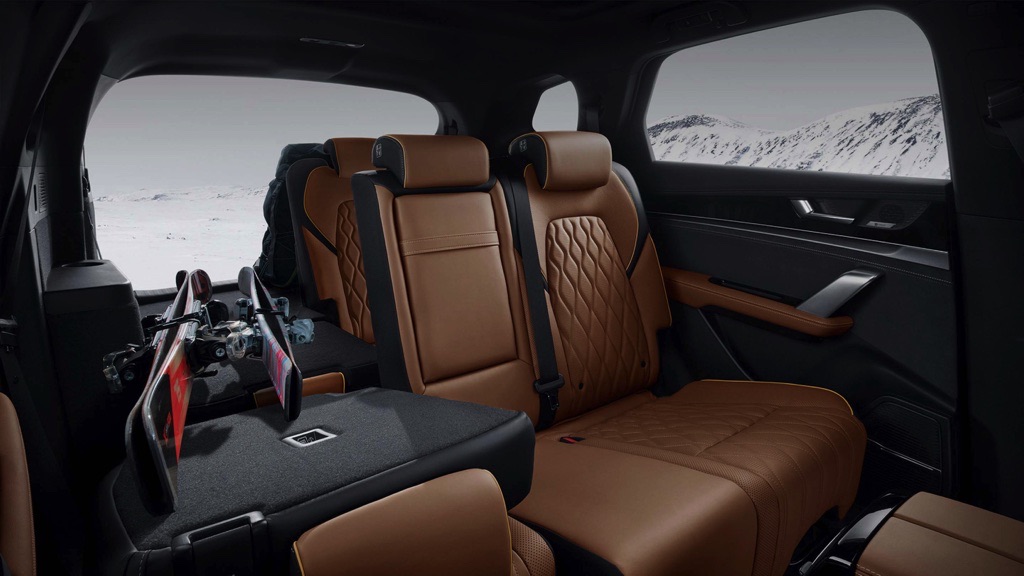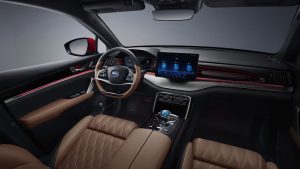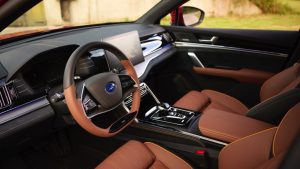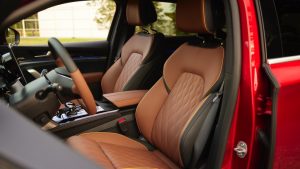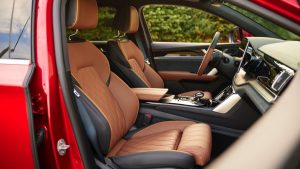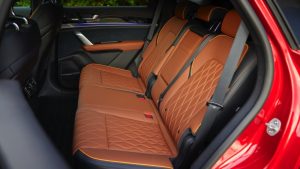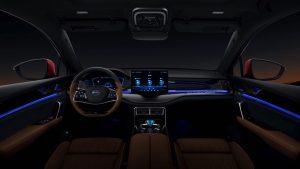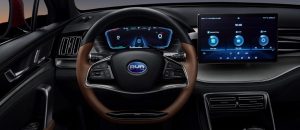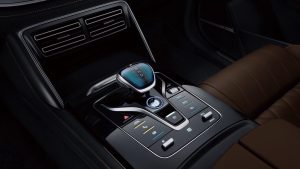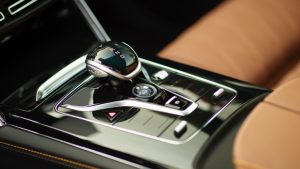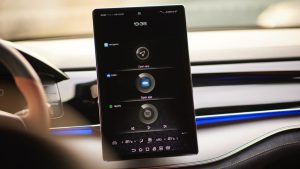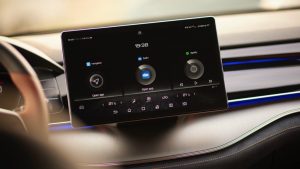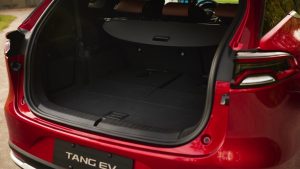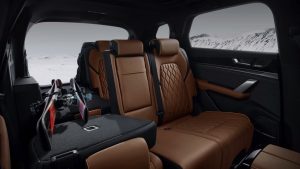The BYD TANG is an exceptional all-electric SUV that combines power, versatility, and advanced technology. With its bold design, spacious interior, and impressive performance, the BYD TANG represents BYD’s commitment to delivering high-performance electric vehicles. Here is a detailed description of the car along with its technical specifications:
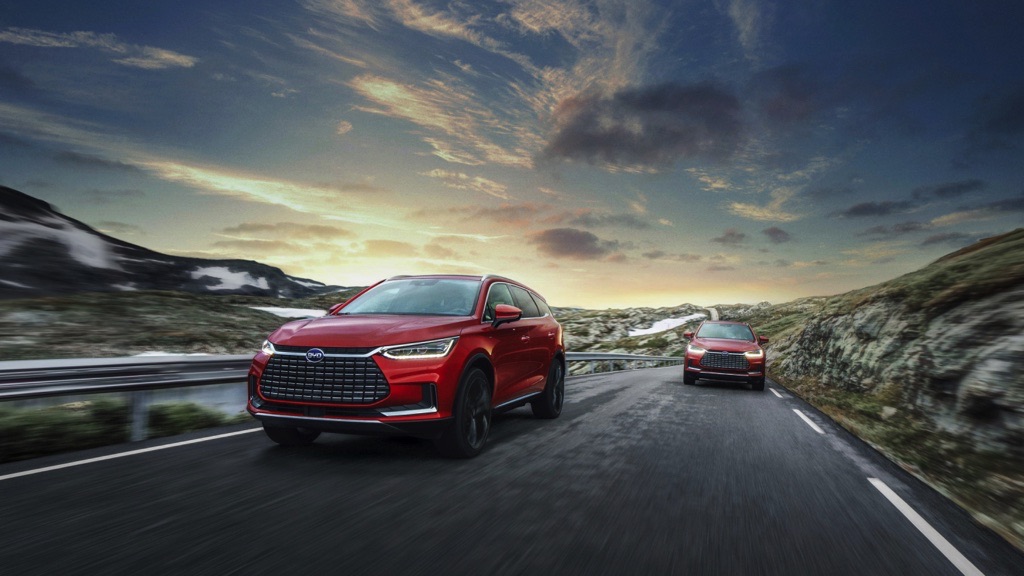
Exterior:
The BYD TANG showcases a striking and muscular exterior design, characterized by sleek lines, a dynamic profile, and a commanding presence on the road. Its aggressive front fascia, sculpted body panels, and aerodynamic features not only enhance its visual appeal but also contribute to its overall efficiency.
Interior:
Inside the BYD TANG, you’ll find a comfortable and well-appointed cabin designed to accommodate both passengers and cargo. With its generous seating capacity and ample legroom, the BYD TANG offers a spacious and luxurious environment for occupants. High-quality materials, advanced features, and attention to detail elevate the interior experience.
Electric Powertrain:
The BYD TANG features a high-performance electric powertrain that delivers exhilarating acceleration and responsive power. It typically incorporates dual electric motors, one on each axle, providing all-wheel drive capability and impressive torque distribution. The powertrain is engineered to deliver a thrilling and dynamic driving experience.
Battery and Range:
The BYD TANG is equipped with a large-capacity lithium-ion battery pack, offering an impressive electric range. The exact range may vary depending on the battery size and driving conditions. With its extended range of capabilities, the BYD TANG provides the freedom to embark on longer journeys with confidence.
Charging Capabilities:
The BYD TANG supports various charging options, providing flexibility and convenience. It can be charged using standard AC outlets for everyday charging needs. Additionally, the TANG is compatible with DC fast chargers, allowing for faster charging times and reducing downtime during long trips.
Technology and Features:
The BYD TANG incorporates advanced technology and features to enhance the driving experience. It typically includes a state-of-the-art infotainment system with a large touchscreen display, offering connectivity, multimedia options, and access to various vehicle settings. The BYD TANG may also feature advanced driver-assistance systems to enhance safety and convenience.

While specific technical specifications of the BYD TANG may vary depending on the model and market, it represents a powerful and versatile electric SUV. With its stylish design, impressive electric range, and advanced features, the TBY DANG offers an enticing combination of performance, comfort, and advanced technology for those seeking a premium electric SUV experience.
| Performance | |
| Acceleration 0 – 100 km/h | 4.6 sec |
| Top Speed | 180 km/h |
| Electric Range | 355 km |
| Total Power | 380 kW (517 PS) |
| Total Torque | 680 Nm |
| Drive | AWD |
| Battery | |
| Nominal Capacity | 88.0 kWh |
| Battery Type | Lithium-ion |
| Number of Cells | €200,00 |
| Architecture | 800 V |
| Useable Capacity | 86.4 kWh |
| Cathode Material | LFP |
| Pack Configuration | 200s1p |
| Nominal Voltage | 640 V |
| Charging | |
| Home / Destination | |
| Charge Port | Type 2 |
| Port Location | Right Side – Rear |
| Charge Power | 7.4 kW AC |
| Charge Time (0->355 km) | 13h45m |
| Charge Speed | 26 km/h |
| Fast Charging | |
| Fastcharge Port | CCS |
| FC Port Location | Right Side – Rear |
| Fast charge Power (max) | 120 kW DC |
| Fastcharge Time (36->284 km) | 45 min |
| Fastcharge Speed | 330 km/h |
| Energy Consumption | |
| EVDB Real Range | |
| Range | 355 km |
| Vehicle Consumption | 243 Wh/km |
| CO2 Emissions | 0 g/km |
| Vehicle Fuel Equivalent | 2.7 l/100km |
| WLTP Ratings | |
| Range | 400 km |
| Rated Consumption | 238 Wh/km |
| Vehicle Consumption | 216 Wh/km |
| CO2 Emissions | 0 g/km |
| Rated Fuel Equivalent | 2.7 l/100km |
| Vehicle Fuel Equivalent | 2.4 l/100km |
| Dimensions and Weight | |
| Length | 4870 mm |
| Width | 1950 mm |
| Width with mirrors | 2180 mm |
| Height | 1725 mm |
| Wheelbase | 2820 mm |
| Weight Unladen (EU) | 2705 kg |
| Gross Vehicle Weight (GVWR) | 3204 kg |
| Max. Payload | 574 kg |
| Cargo Volume | 235 L |
| Cargo Volume Max | 1655 L |
| Cargo Volume Frunk | 0 L |
| Roof Load | 75 kg |
| Tow Hitch Possible | Yes |
| Towing Weight Unbraked | 750 kg |
| Towing Weight Braked | 1500 kg |
| Vertical Load Max | 80 kg |
| Miscellaneous | |
| Seats | 7 people |
| Isofix | Yes, 2 seats |
| Turning Circle | 11.8 m |
| Platform | No Data |
| EV Dedicated Platform | No Data |
| Car Body | SUV |
| Segment | JE – Executive |
| Roof Rails | Yes |
| Heat pump (HP) | Yes |
| HP Standard Equipment | Yes |
Home And Destination Charging (0 -> 100%)
A public charging station is required to use the highest possible charging rate. The EVSE/charging station’s charging capacity affects how long it takes to fully charge the battery. The table below shows all possible options for fully charging the BYD TANG.
In Europe, plugging an electric car into an outlet is often as easy as plugging it into a household outlet, but there are differences from country to country. The table below shows the different ways to charge the BYD TANG, but in some countries, some chargers may not be available.
Type 2 (Mennekes – IEC 62196)

| Charging Point | Max. Power | Power | Time | Rate |
| Wall Plug (2.3 kW) | 230V / 1x10A | 2.3 kW | 44h15m | 8 km/h |
| 1-phase 16A (3.7 kW) | 230V / 1x16A | 3.7 kW | 27h30m | 13 km/h |
| 1-phase 32A (7.4 kW) | 230V / 1x32A | 7.4 kW | 13h45m | 26 km/h |
| 3-phase 16A (11 kW) | 230V / 1x16A | 3.7 kW | 27h30m | 13 km/h |
| 3-phase 32A (22 kW) | 230V / 1x32A | 7.4 kW | 13h45m | 26 km/h |
Fast Charging (10 -> 80%)
If you want to enjoy driving an electric car, one of the most important features to consider is the number of miles per hour the car can travel while charged. This is called the “range” of the car. All electric cars have a certain range, even if they are 100% charged. This is because they do not have an internal combustion engine to lean on if you need to drive a long distance.
Max. Power: The maximum power provided by the charging point
Avg. Power: The average power provided by the charging point during a session of 10% to 80%.
Time: the time it takes to charge from 10% to 80%
Speed: the average charging rate during the session of 10% to 80%
Combined Charging System (CCS Combo 2)
| Charging Point | Max. Power | Avg. Power | Time | Rate |
| CCS (50 kW DC) | 50 kW | 40 kW | 95 min | 150 km/h |
| CCS (100 kW DC) | 100 kW | 75 kW | 51 min | 290 km/h |
| CCS (150 kW DC) | 120 kW | 85 kW | 45 min | 330 km/h |
| Brand | BYD |
| Model | TANG |
| Body Style | SUV |
| Motor power | 380 |
| Maximum Torque, Nm | 680 |
| Battery Energy, kWh | 88.0 |
| Power reserve (NEDC/EPA/WLTP), km | - / - / 355 |
| Level Charging (230/400/DC), hours | 44.15 / 13.45 / 0.45 |
| Electrical Acceleration, 0-100 km/h (0-62.1 mph) in sec | 4.6 |
| Top Speed, km/h | 180 |
